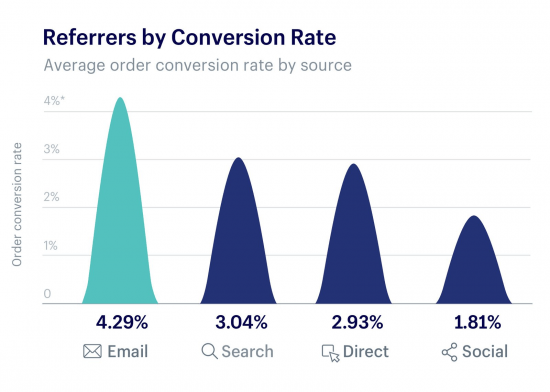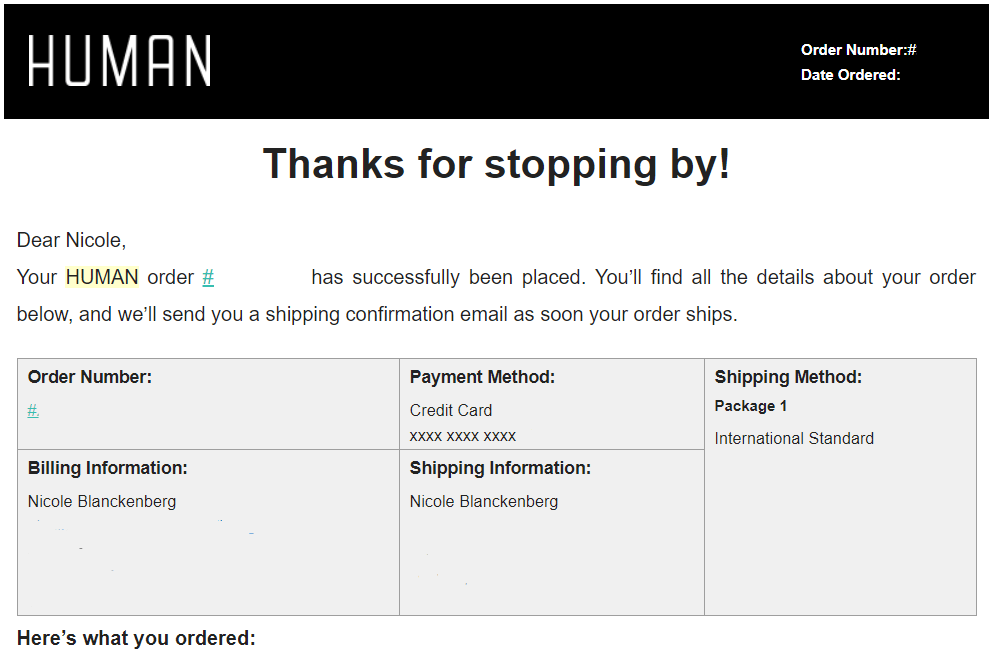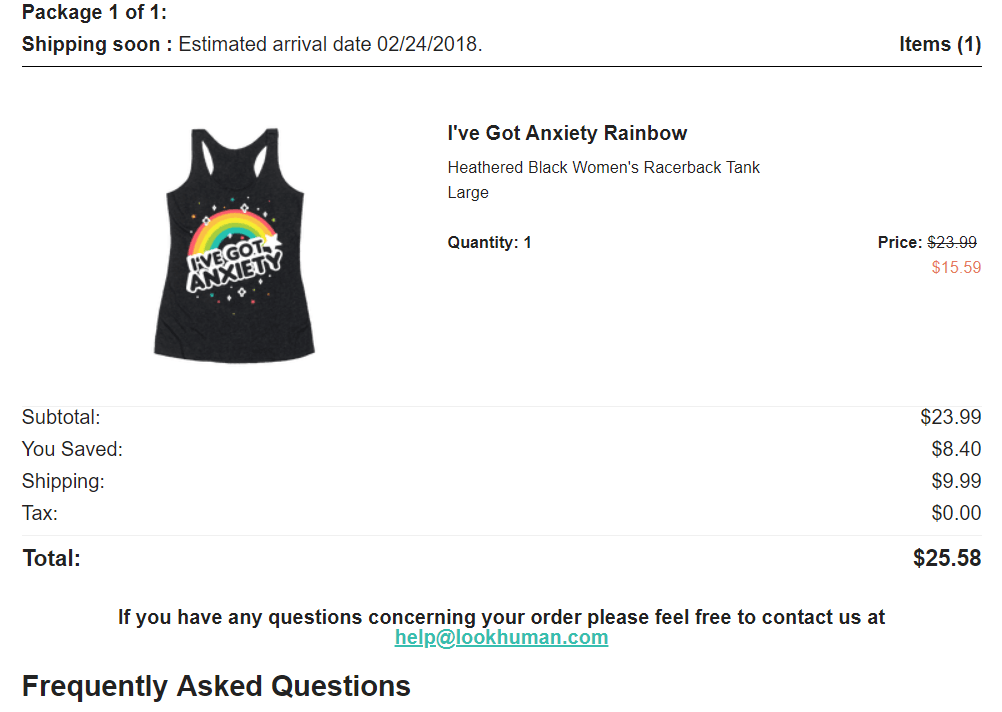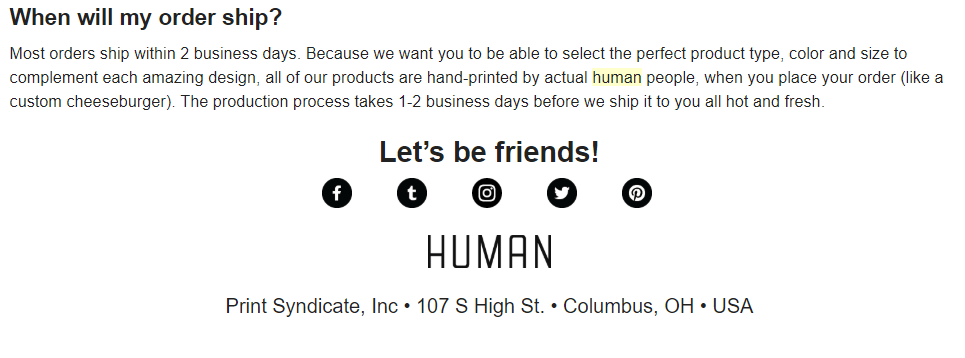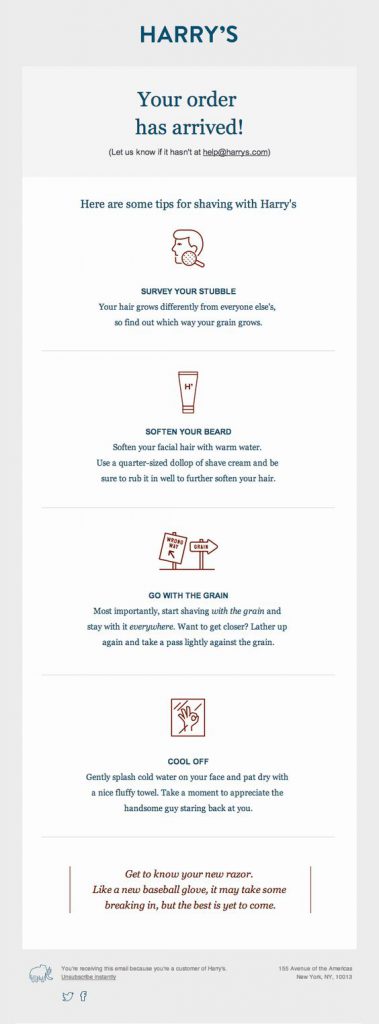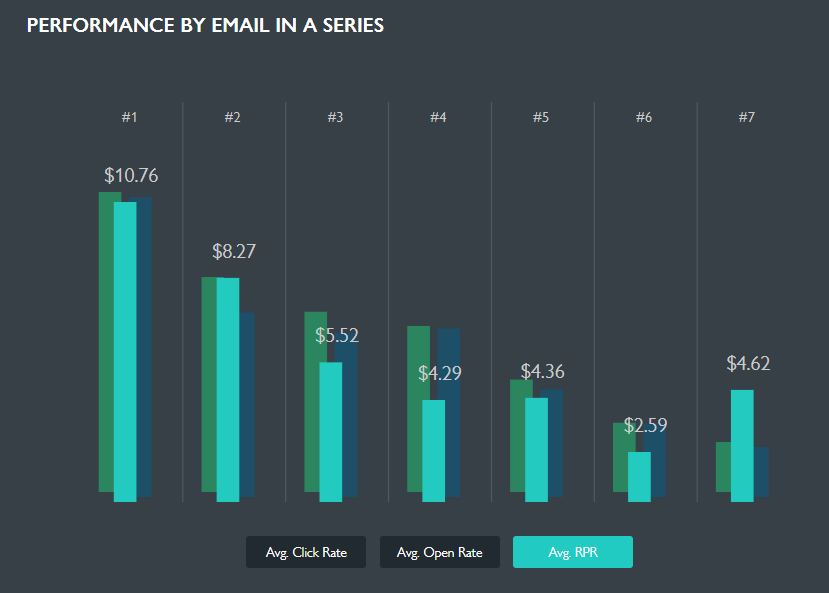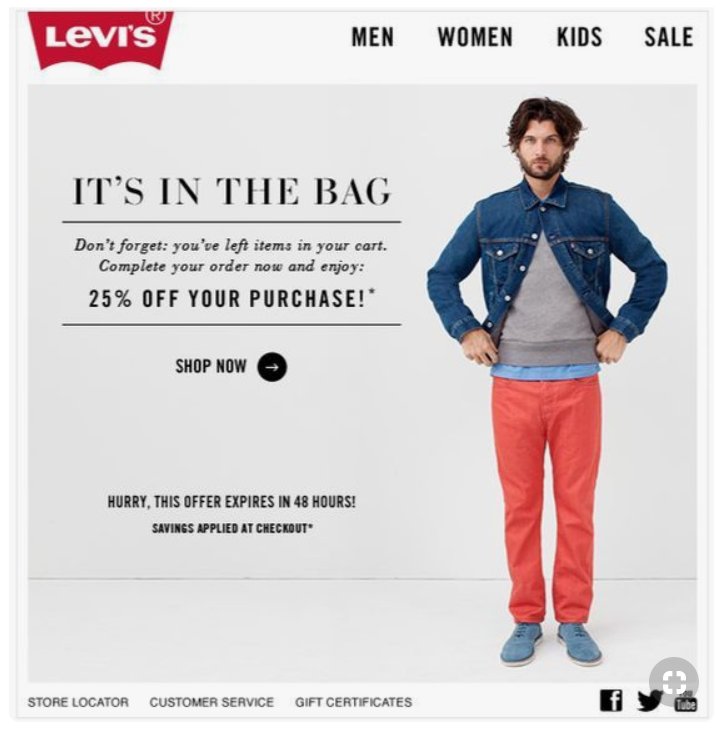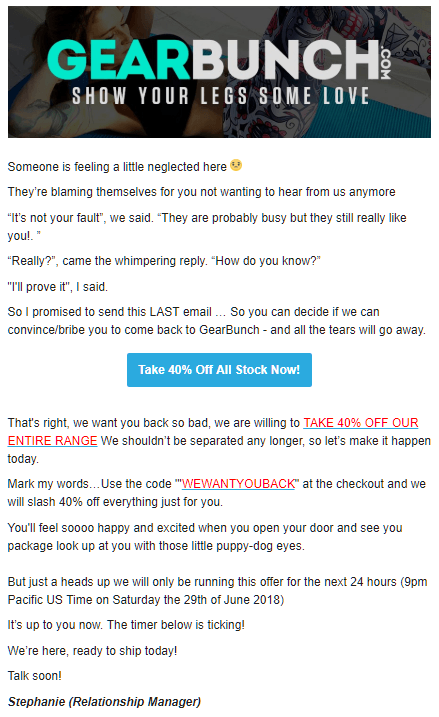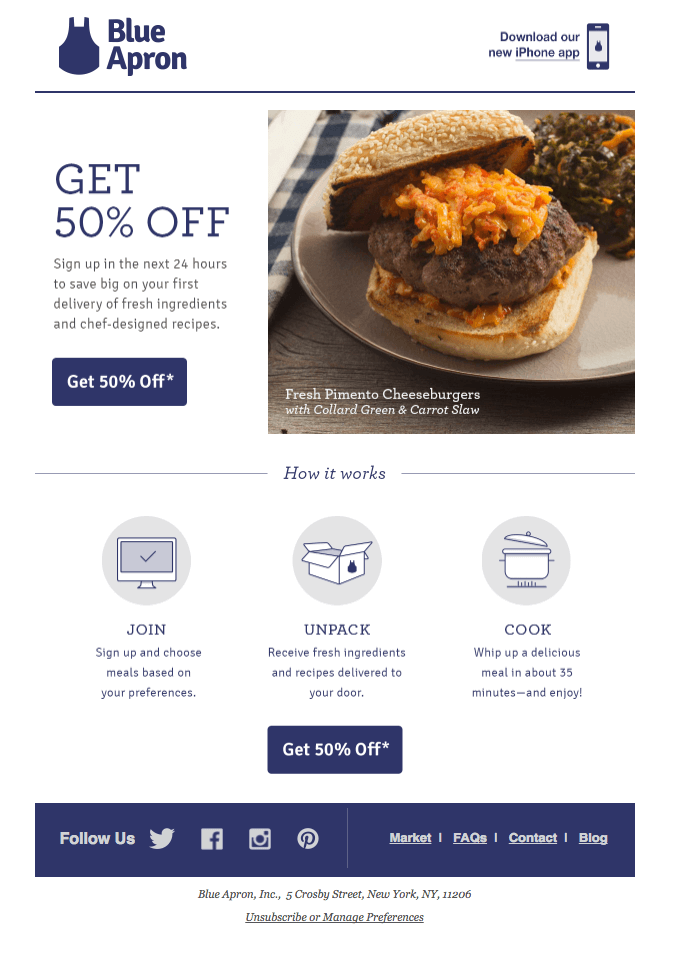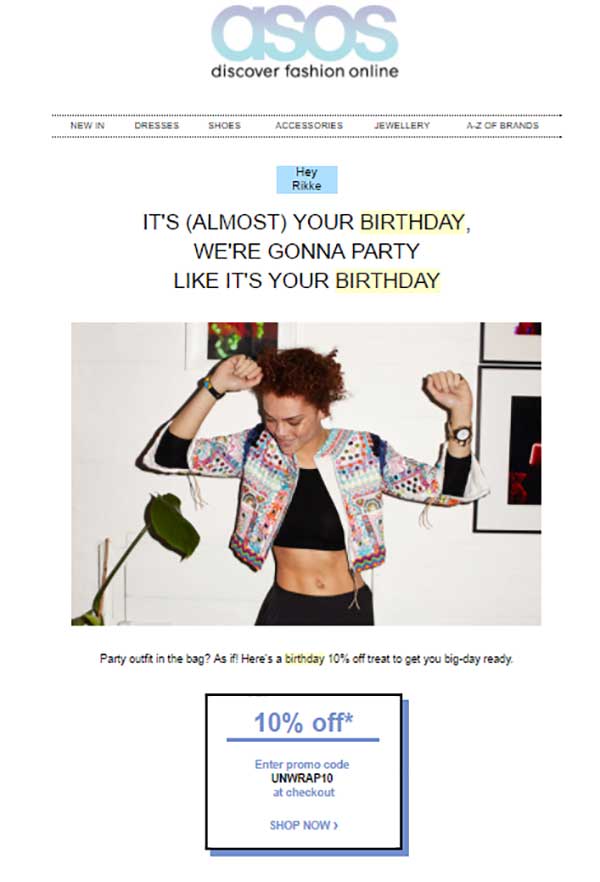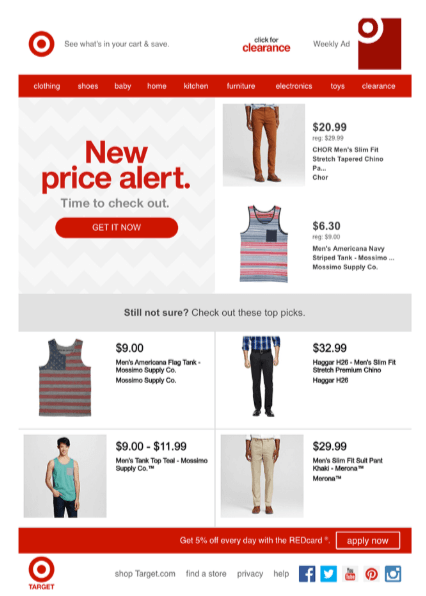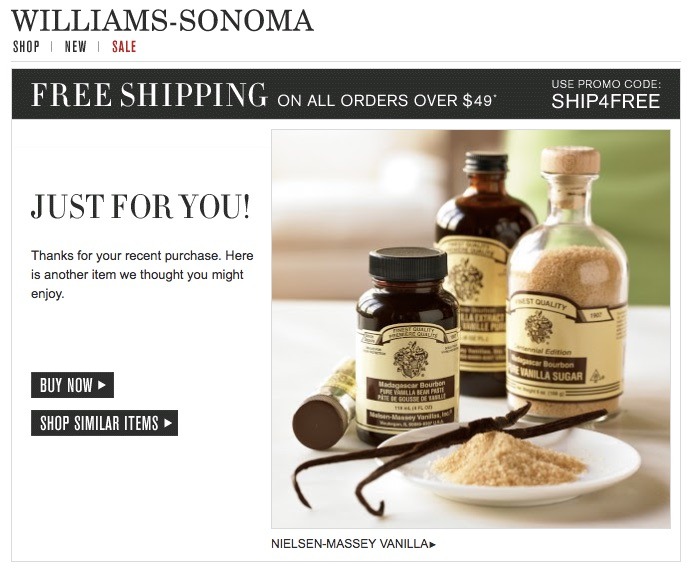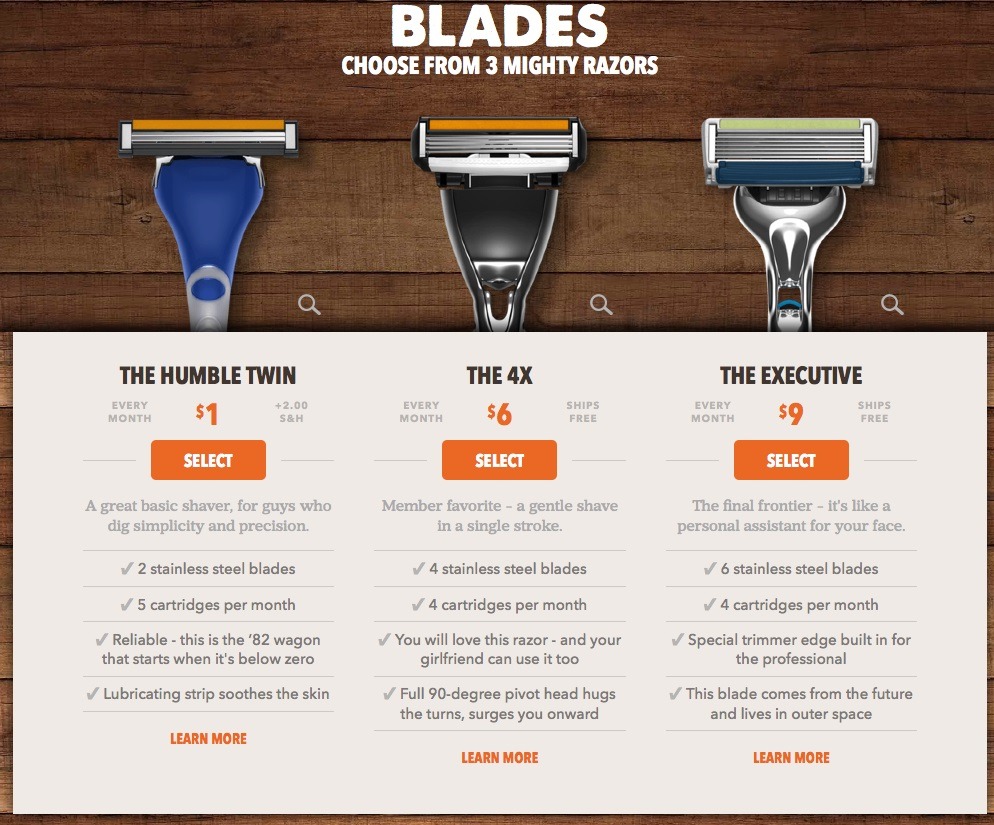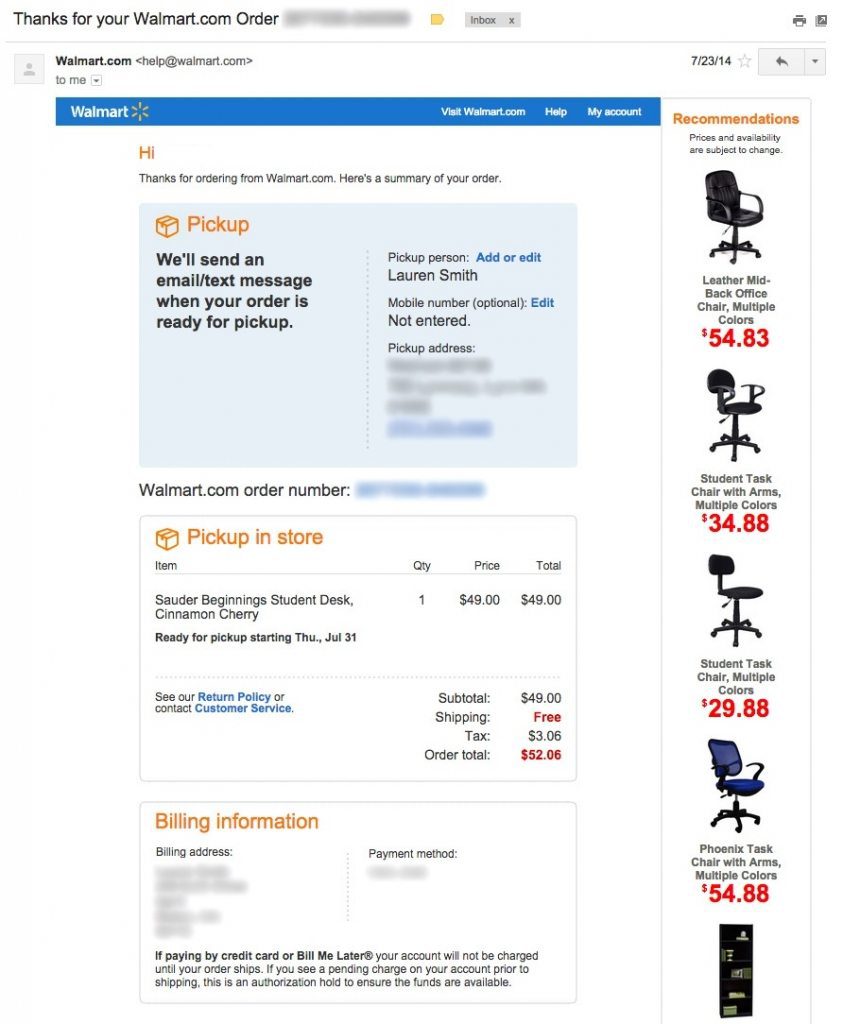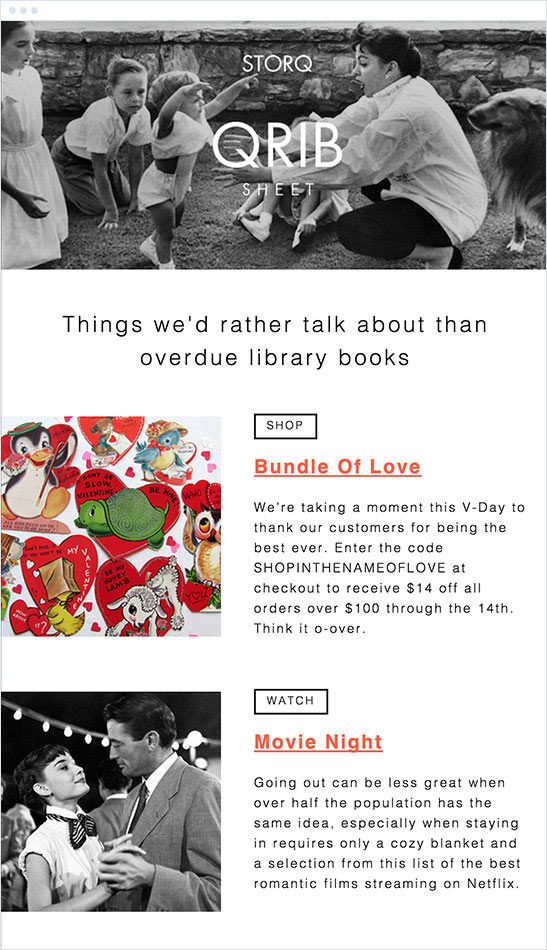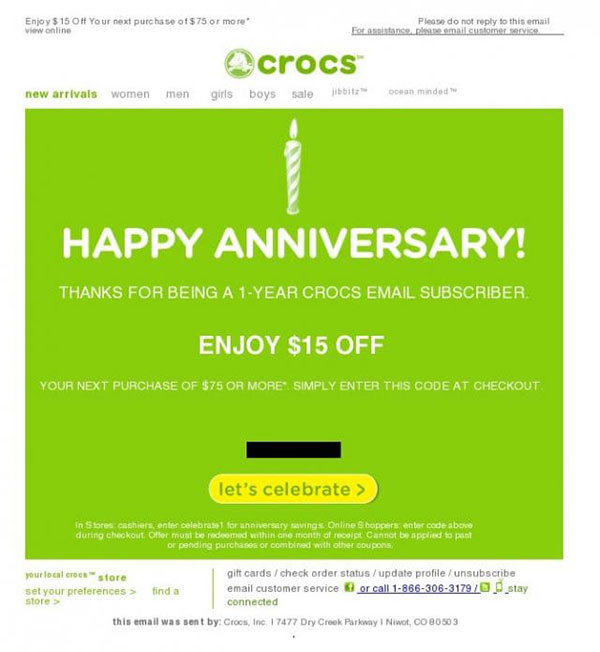If you think email is dead, you’re very mistaken. In fact, that misconception is one of the 7 deadly eCommerce myths that stops conversions in their tracks! We know that email marketing plays a huge role in eCommerce remarketing strategies. Therefore, by knowing winning eCommerce email campaign strategies, they can also the most cost-effective.
So, where to start? Why, with these 9 winning eCommerce email campaigns, of course! We’ve jam-packed a lot of useful eCommerce email marketing tips in here, so let’s get right into it.
1: The Clean, Informative Order Confirmation Email
The order confirmation email may seem like a given, but it is also the most underutilized automatic email by eCommerce businesses. The confirmation email is not only your chance to engage directly with your customer from the point of sale but helps build brand loyalty.
The key to its success is in ensuring that your order confirmation emails are designed to make the whole sales process more enjoyable, easy and informative – building brand loyalty from the earliest stages.
The best order confirmation emails are personalized and include images of the purchased products, your buyer’s name, order information such as the quantities bought, billing summary, shipping details, order number, expected arrival dates and times, links to important information, and fit your online store branding. All while being clean in design and user-friendly.
One of my eCommerce brand crushes, Human, knows exactly what a winning order confirmation email campaign entails. They include all relevant information while keeping their email copy in line with their brand voice. Here’s an example of their order confirmation email that left a good lasting impression.
Here are some more elements or promotions you could include in your eCommerce order confirmation email to stand out from the crowd:
- Display similar products to cross- or up-sell
- Include referral or customer loyalty programs to build loyalty
- Add social share or review CTAs to use order confirmation emails to encourage customer engagement
- Promote email or social signups to grow your audiences
- Include links to other product pages or categories
2: The Helpful Order Arrival / Shipping Confirmation Email
Customer loyalty starts with user experience, and your order arrival email is your last chance to make an impact after a sale. Take a look at a Harry’s order arrival email that not only sticks to the voice of the brand and speaks their target audience’s language but includes high-value content: that is the perfect example of using user experience to build brand loyalty.
You’ll be surprised by how many leading eCommerce brands don’t make use of order arrival or shipping confirmation emails. It’s a pity because they allow them to show off their brand’s ‘human’ side by including some personality. Why is this type of email on our list of recommended email campaign types for eCommerce? Because this is the perfect time to turn first-time shoppers into loyal customers.
When you look at customer loyalty stats, it’s hard to ignore how much revenue repeat customers can bring. Let’s look at some leading eCommerce customer loyalty stats from Business 2 Community:
- You have 14 times more likely to convert an existing customer than a new one
- It costs eCommerce brands up to six times less to maintain an existing customer than convert a new shopper
- Up to 73% of your shoppers are likely to refer you to someone else if they feel satisfied with your customer service
3: The Facebook Live Engagement Email Campaign
Running email campaigns that encourage social engagement are nothing new. Neither is the concept of service providers, business coaches and experts using email to push live or recorded webinars and video concept. But, did you know you can use your eCommerce newsletters to help push mailing lists to your social platforms to promote engagement?
A great example of this is eCommerce success story One Kid, who runs email newsletter campaigns to encourage mailing lists to tune in for their Facebook live videos. With the integration of live giveaways and personalization, they are able to use their Facebook lives as remarketing campaigns and show the humans behind their brand, all while providing good-value information about their products.
Including a social engagement into your email campaigns is a great way to engage more directly with your mailing lists while growing your social following. If you’re not quite there yet, remember that at the very least, every email of yours (one-off, campaign or automatic) should include social share icons.
4: The Perfectly-Crafted Scarcity Email Campaign
We know that scarcity can help nudge shoppers into pushing that buy button – because humans, by nature, don’t like missing out.
Scarcity makes products/promotions seem more exclusive and valuable, and one of the best ways to use this is by creating emails that inform potential shoppers that if they don’t want FOMO, to buy now before stock runs out or before a promotion ends.
Amazon Prime deals are an excellent example of creating scarcity. Another good example is all those limited time emails, such as this one from Oiselle, which creates scarcity in their subject line and their limited time sale.
As you can see, when it comes to scarcity campaigns, your email subject will be doing a lot of the heavy lifting for this email campaign. Here are two other concepts to give you some inspiration, from Nomatic and a successful eCommerce store that does $3.5 million in yearly revenue, Noli Yoga.
The trick, though, is to not inundate mailboxes with limited time promotions because they will lose their scarcity feel very quickly.
Other ways you can add scarcity to your email marketing is by creating the following in your eCommerce email campaigns:
- Announce limited edition products
- Run limited time promotions
- Offer limited time sales coupons to VIP shoppers
- Use scarcity to push holiday revenue
- Limited time free shipping
- Limited time free gifts with certain purchases
5: The Simple Abandoned Cart Email Campaign
A good abandoned cart email doesn’t need to be complicated. Each email should have a headline, a description, a photo of the product and/or product details, a ‘Buy Now’ or other CTA button, and navigation to your online store.
Simplicity can actually pay off. Just look at eCommerce giant Dollar Shave Club, who not only sticks to their brand voice in creating compelling copy and CTAs that fit their target audience, but back it up with real testimonials, all while keeping it simple.
There are two types of abandoned cart email options. The first is the one-off abandoned cart email that reminds shoppers of the product waiting for them to purchase and is usually sent within a day of your potential shopper leaving their basket without finishing the checkout process. The second is an email campaign: a series of abandoned cart emails that follow up with shoppers within 24 hours and then a few days later, offering a discount.
So which should you be doing?
Generally speaking, having at least one abandoned cart email can recover up to 15% percent in revenue, and according to a recent Klaviyo benchmark study, abandoned cart emails result in a 41.18% open rate, a 9.5% click rate and an average revenue of $5.81 per recipient. However, Klaviyo also found that on average, a two- or three-email abandoned cart series or flow is the best email practice for eCommerce.
Ultimately, you need to test your abandoned cart emails to find a winning series strategy for your brand and customers; this includes the number of emails you send out and the time frames of when you send.
If you are doing a series of emails with one including a discount, you want to make sure you also A/B test the discount size to find the right fit for your store by comparing open, click and email-to-purchase conversion rates.
Pro Tip: Shoppers abandon carts for a number of reasons that include lousy website user experience, surprise additional costs, or the voucher they were trying to use wasn’t valid. Doing a quick site audit or survey can help you eliminate the causes that are within your control. However, abandoned carts are an inevitable part of eCommerce business. Things like unsuccessful user payments, the fact that they might have just been browsing, or that shoppers got distracted and will come back later, can all lead to abandoned carts. Therefore, abandoned cart emails (and Google and/or Facebook remarketing campaigns) are an important part of your eCommerce marketing strategy.
6: The Win-Back Email Campaign
As we mentioned, re-engaging existing customers is a lot cheaper than getting brand new ones. This is why the win-back email is one of the most important weapons in your email marketing arsenal. This is something that Gearbunch, the online legging store who reached $5 million in revenue in their first year, understands well.
Putting emphasis on great copy, big discount codes and personality, their win-back email campaigns are a good example of how to show your dormant customers some love and bring them back into the (buying) fold.
A good eCommerce win-back email campaign should be separated into tight segments, grouping together similar previous shoppers. It should show your audience what they are getting (your offer), be automated, and sent at optimum times that you’ve established through testing.
Pro Tip: You want to make sure that you keep these mailing lists up-to-date and managed. This means removing subscribers who continually don’t open your win-back campaigns, to ensure that you have a good delivery rate picture while ensuring that you put your effort into those more likely to shop. The best way to do this is by sending those non-openers an email asking whether they would like to unsubscribe or stay on the list, and if it’s the former, offer an option where they can say why they want to be removed.
Here are a few win-back email campaign themes to get your creative juices flowing:
- The offer win-back email – VIP sale/discount/promotion for dormant customers
- The benefits reminder – highlighting what pain point your products address
- The mailing list update
- The replenish email – reminding your shoppers that it is time to stock up
- Life event emails – like offering discounts to shoppers on their birthdays
7: The Convincing Cross/Up-Sell Email Campaign
Just like not having checkout up- or cross-sell options in your checkout process is a big eCommerce mistake that is costing you sales, so is not including up-sell elements in your marketing emails like we’ve shown above.
But that’s not enough!
Say what?
It’s true: every eCommerce store owner should have at least one cross- or up-sell email campaign in their repertoire. A great example of this is Target’s price reduction email campaigns that show when similar products to what someone has bought go on sale, as a way to cross-sell previous customers based on their personal preferences (searches) and buying history.
There are a number of other ways you can add up- or cross-selling to your email marketing strategy. Here are a few examples to get you started:
- Cross-Selling By Product or Category
Create a product or category follow-up email newsletter to previous customers that includes related or similar products. A great example of this would be sending out a holiday-related marketing email that includes similar products in the categories they have bought, dividing them into clickable categories such as ‘trending Black Friday [products]’ or ‘[Product] gifts for Mom/Dad.
- Marketing New Products or Upgrades
Send marketing emails with new ranges similar to what customers have bought, including up- or cross-sell products in the email. An example of an up-sell, in this situation for a subscription service, would be to offer a product upgrade they can add to their box.
- Using Your Automatic Emails to Cross-Sell
Turn your automatic receipt email into an up-selling opportunity. When better to up-sell products than when you thank someone for their order and send them the receipt?
8: The Content Curation Email Campaign
If you’ve been following me on the StoreYa eCommerce Blog for some time, you will know that one of my biggest pet peeves is when an eCommerce store gets their email marketing out of balance. And one of the sure ways that that happens is when the frequency is off (as in, I am getting a gazillion emails a week and I have no choice but to unsubscribe) or if they don’t offer me any value (the emails are segmented to my preferences and they don’t offer me any value.)
An easy fix for the latter is ensuring that you are not always taking (“Buy, buy, buy!”) in your emails, but giving as well. A great example of doing just that comes from STORQ, whose prime target market is mothers who are expecting.
Instead of flooding their potential and current shoppers with email ‘take,’ they include (‘give’) highly relevant content that expectant mothers will find valuable. Packing their content curation email newsletter campaigns with topics on pregnancy, parenting and motherhood, they include things to watch, things to read and things to buy.
There are a lot of email marketing apps out there, such as Campaign Monitor, which will allow you to create this eCommerce email campaign type. Here are some design tips to get you going:
- Create an awesome header and let your logo dictate your color schemes
- Stick to standard, easy-to-read fonts
- Make it visual (include images) and stack the content
9: The Reward Email Campaign
Last but not least, your email marketing strategy wouldn’t be complete if it didn’t include campaigns aimed at your regular or big spenders. And exclusivity in an email campaign goes a long way to helping your special shoppers feel extra special by rewarding them with exclusive discounts, free shipping offerings, free returns and more.
It can even be as simple as rewarding someone for being on your mailing list, like Crocs does!
You don’t need a whole new campaign for this if you don’t have specific reward programs. Instead, you can integrate your loyalty or VIP sales elements with other email campaign types, such as winbacks or monthly after-sale follow-ups.
—
There you have it – a collection of 9 winning eCommerce email campaigns for your triggered/automatic emails and marketing campaigns. Remember, you don’t want to wait for target audiences to become shoppers before getting their email deets; a well-designed eCommerce popup that offers discounts will help you turn store traffic (browsing shoppers) into regular mail engagers.

Nicole is a content writer with over sixteen years experience and flair for storytelling. She runs on a healthy dose of caffeine and enthusiasm. When she's not researching the next content trend or creating business content strategies, she's an avid beachgoer, coffee shop junkie and hangs out on LinkedIn.
Recommended articles
 Facebook Ads for eCommerce: 16 Strategies, Examples & Tips
Facebook Ads for eCommerce: 16 Strategies, Examples & Tips
 How to Build a Winning eCommerce Ads Strategy
How to Build a Winning eCommerce Ads Strategy
 Google Ads for eCommerce: Everything You Need to Know
Google Ads for eCommerce: Everything You Need to Know
 10X Your Traffic with PPC Management Software
10X Your Traffic with PPC Management Software
Comments
Powered by Facebook Comments
